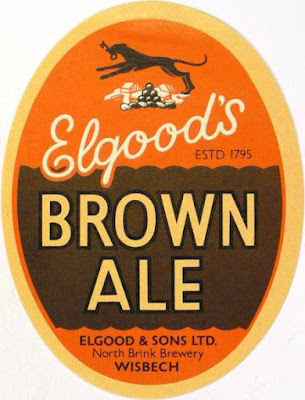The total malt content is quite high, averaging around 80%. Mostly in the form of base malt. Of which there are two: pale malt and mild malt. No real surprise that the latter should be used in Mild Ales. Especially at more price-conscious breweries.
I suppose enzymic malt also counts as a base malt. I’m not sure if it was really needed to help mash conversion. But some brewers found it a hard habit to kick.
The most commonly-used other malt is crystal. Again, no real surprise there. It’s more of a shock that there are examples without it. And one of those is from Scotland, where crystal malt was never much used. There’s quite a bit of variation in the percentage, from around 5% to over 13%.
Only three beers contain any roasted malt: one black malt and two chocolate malt. Why so few? Because most of the beers were getting the majority of their colour from sugar, not malt. Which was really typical of Dark Mild.
I’m not 100% sure that Boddington used wheat in malted form. It isn’t clear from the brewing records which form it was in. It could also have been flour or flakes. I assume its presence was for improved head retention.
| Mild Ale malts 1969 - 1985 | ||||||||||
| Year | Brewer | Beer | pale malt | mild malt | black malt | choc. Malt | crystal malt | wheat malt | enzymic malt | total malt |
| 1977 | Adnams | XXX | 79.72% | 8.30% | 88.03% | |||||
| 1971 | Boddington | BM | 65.24% | 13.73% | 3.43% | 2.58% | 84.98% | |||
| 1971 | Boddington | XX | 64.59% | 13.60% | 3.40% | 2.55% | 84.14% | |||
| 1970 | Drybrough | B 60/- | 76.50% | 1.82% | 78.32% | |||||
| 1975 | Elgood | MM | 67.40% | 11.23% | 78.64% | |||||
| 1969 | Fremlin | XX | 66.90% | 1.05% | 9.41% | 2.61% | 79.97% | |||
| 1968 | Fullers | H | 75.00% | 5.00% | 80.00% | |||||
| 1972 | Higson | H | 70.05% | 6.43% | 76.49% | |||||
| 1971 | Shepherd Neame | MB | 67.49% | 4.82% | 72.31% | |||||
| 1969 | Truman | LM | 65.49% | 9.63% | 75.12% | |||||
| 1972 | Whitbread | B. Mild | 69.77% | 3.49% | 9.07% | 82.33% | ||||
| 1985 | Tetley | Mild | 77.50% | 77.50% | ||||||
| 1985 | Tetley | Falstaff | 77.50% | 77.50% | ||||||
| 1971 | Watney | Special Mild | 70.00% | 5.50% | 75.50% | |||||
| Average | 79.34% | |||||||||
| Sources: | ||||||||||
| Adnams brewing record held at the brewery. | ||||||||||
| Boddington brewing record held at Manchester Central Library, document number M693/405/134. | ||||||||||
| Drybrough brewing record held at the Scottish Brewing Archive, document number D/6/1/1/9. | ||||||||||
| Elgood brewing record held at the brewery | ||||||||||
| Fremlin brewing record held at the Kent Archives, document number U3555/2/F/Bx2/1/93. | ||||||||||
| Fullers brewing record held at the brewery. | ||||||||||
| Higson brewing record. | ||||||||||
| Shepherd Neame brewing book held at the brewery, document number 1971 H-5O5. | ||||||||||
| Truman brewing record held by Derek Prentice. | ||||||||||
| Whitbread brewing record held at the London Metropolitan Archives, document number LMA/4453/D/09/141. | ||||||||||











































































2 comments:
If roast malt or barley is used in a beer , surely that creates a Porter or a Stout ? I have been under the impression that the colour of Mild derives from dark sugars.
I would agree with you there the only exception is chocolate malt or darker crystal malts being used.
Oscar
Post a Comment